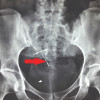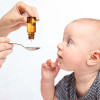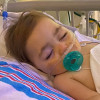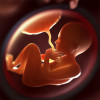
 IJCP Editorial Team
IJCP Editorial Team
Aspiration of Endometrial Cavity with Diosmin Intake in ART Cycles
A recent study focused on the occurrence of
endometrial cavity fluid in Assisted reproductive technique (ART) cases.
This was a prospective randomized controlled trial conducted from 2013 to 2021 at a private fertility center, which involved studying 200 cases with endometrial cavity fluid on the day of oocyte retrieval. The cases were divided into two groups – the control group (Group 1) and the interventional group (Group 2). Group 1 received conventional management and underwent transvaginal ultrasound on day 5, whereas Group 2 had the fluid aspirated and was given diosmin 500 mg three times a day until reassessment on embryo transfer day. Both groups proceeded with fresh embryo transfer if no fluid was present on day 5, or a freeze-all policy was adopted if persistent fluid was detected.
It was noted that endometrial fluid on the 5th day was
significantly lower in the interventional group (6.0%) compared to the control
group (28.0%). Meanwhile, the pregnancy rate was slightly higher in the
interventional group (54.3% vs. 50.0%). However, the difference was not
statistically significant. The intervention was associated with a reduced risk
of endometrial fluid.
It was concluded that aspirating endometrial cavity fluid with diosmin intake increased the likelihood of fresh embryo transfer and resulted in a slightly improved pregnancy rate compared to conservative management.
Source: Saad AS, Mohamed KA. The Journal of Obstetrics
and Gynecology of India. 2023 Aug 31:1-7.

IJCP Editorial Team
Comprising seasoned professionals and experts from the medical field, the IJCP editorial team is dedicated to delivering timely and accurate content and thriving to provide attention-grabbing information for the readers. What sets them apart are their diverse expertise, spanning academia, research, and clinical practice, and their dedication to upholding the highest standards of quality and integrity. With a wealth of experience and a commitment to excellence, the IJCP editorial team strives to provide valuable perspectives, the latest trends, and in-depth analyses across various medical domains, all in a way that keeps you interested and engaged.












Please login to comment on this article